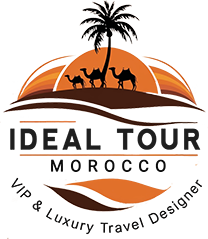HomeBlogMoroccan CuisineWhat to Eat in Morocco: Top Delicious Moroccan Food
What to Eat in Morocco: Top Delicious Moroccan Food
Beyond Couscous and Tagines: Exploring the Culinary Treasures of Morocco Moroccan cuisine is a feast for the senses, offering far more than […]
Beyond Couscous and Tagines: Exploring the Culinary Treasures of Morocco
Moroccan cuisine is a feast for the senses, offering far more than its iconic tagines and couscous. From hearty slow-cooked meats and vibrant vegetable salads to fresh fruits and decadent pastries, Morocco’s culinary repertoire is as diverse as it is delicious.
While many midrange restaurants stick to familiar tagine dishes, adventurous food lovers can find greater variety by exploring street food vendors or dining at the growing number of innovative fusion restaurants. Another excellent way to experience Moroccan cuisine is by enjoying home-cooked meals at your riad (traditional guesthouse). Here’s a guide to some of the must-try dishes and drinks during your trip.
Savor the Flavors of Tagine
A staple of Moroccan cooking, the tagine is a fragrant, slow-cooked stew named after the conical clay pot in which it’s prepared. The pot’s unique shape ensures the ingredients remain moist and tender. Popular variations include chicken with preserved lemons and olives, beef or lamb with prunes, and kefta (spiced meatballs) simmered in a zesty tomato sauce with eggs.
Ras el hanout, a North African spice blend containing up to 12 spices like cinnamon, cumin, ginger, and turmeric, is integral to tagines and makes for a wonderful souvenir from the souks.
Where to try it: For a memorable dining experience, visit Dar Hatim in Fez, a family home transformed into a restaurant offering a standout lamb tagine.
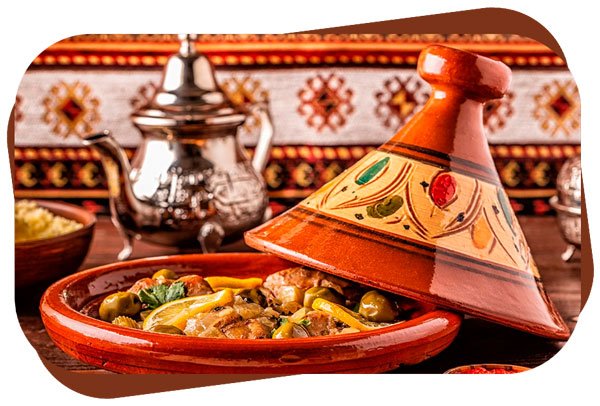
Start Your Day with a Moroccan Breakfast
Moroccan breakfasts are simple yet satisfying, often featuring a combination of bread, pastries, and eggs. Beghrir, or Moroccan pancakes, are made from semolina and topped with honey butter. Shakshuka is another breakfast favorite, with poached eggs cooked in a flavorful tomato, pepper, and onion sauce. For a classic option, try fried eggs with olives, cheese, and fresh bread.
Where to try it: Enjoy breakfast with a view at Café Des Épices in Marrakesh, or savor the relaxed ambiance of La Sqala in Casablanca.
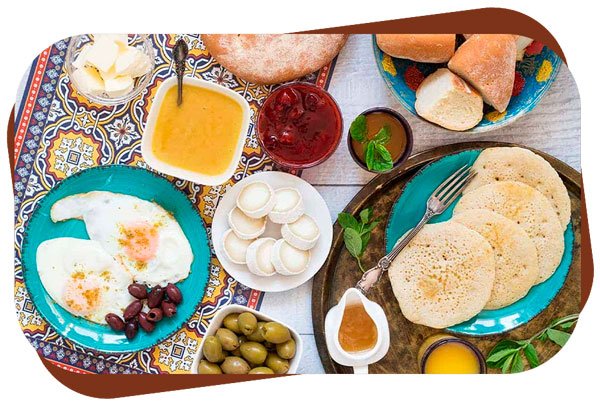
Snack on Street Food: Brochettes
Grilled Moroccan kebabs, or brochettes, are a street food staple. Made from spiced and skewered lamb, chicken, or kefta, these are typically served with khobz (flatbread), harissa, and a side of cumin and salt. Adventurous eaters may want to try the “mixed meat” options that include liver, kidneys, or heart.
Where to try it: The food stalls in Marrakesh’s Djemaa el-Fna Square offer a variety of brochettes alongside other street food delights.

Relish Morocco’s National Dish: Couscous
Known locally as seksu, couscous is a Friday tradition across Morocco but is also available daily in many restaurants. The time-intensive process of hand-rolling and steaming durum wheat granules results in a light and fluffy dish. Couscous is often served with a medley of vegetables and sometimes paired with chicken or lamb in a savory broth.
Where to try it: Al Mounia in Casablanca is a top spot for authentic couscous and other traditional Moroccan dishes.

Delight in Marrakesh’s Signature Dish: Tanjia
Dubbed the “bachelor’s dish,” tanjia is a slow-cooked specialty from Marrakesh. This hearty meal features meat, preserved lemon, garlic, onions, and spices, all cooked to perfection in a clay pot over hot coals.
Where to try it: Visit Hadj Mustapha in Marrakesh, renowned for its exceptional preparation of tanjia

Sweet Treats: Cornes de Gazelle and Chebakia
Cornes de gazelle are crescent-shaped almond-filled cookies scented with orange blossom water, best enjoyed with a cup of mint tea. Another favorite is chebakia, a sticky honey-coated pastry flavored with anise, cinnamon, and saffron.
Where to try them: For cornes de gazelle, head to Pâtisserie Bennis Habous in Casablanca. Try traditional chebakia at Bazaar Cafe in Marrakesh or La Rose du Sable in Aït Benhaddou.
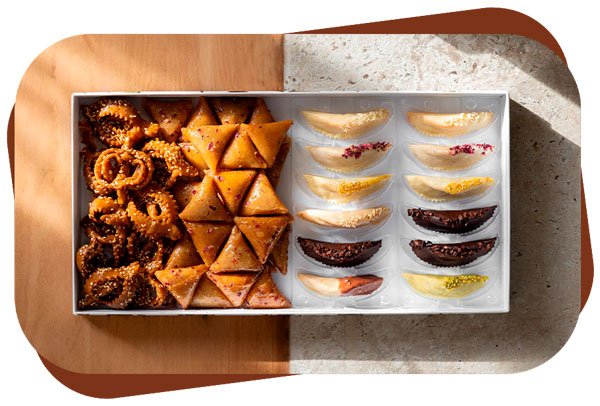
Sip on Moroccan Mint Tea
Known as “Berber whiskey,” Moroccan mint tea is a blend of green tea, fresh mint leaves, and sugar. This ubiquitous drink is a symbol of hospitality, often served at riads or in tea shops throughout the medinas.
Where to try it: Pâtisserie Driss in Essaouira, one of Morocco’s oldest pastry shops, is an excellent spot to enjoy a refreshing cup of mint tea.
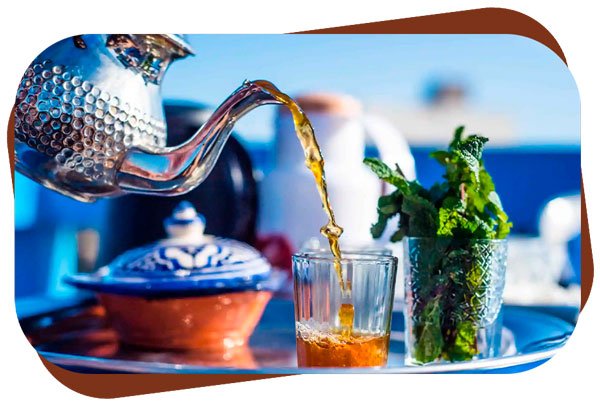
Vegetarian and Vegan Options
Morocco offers an abundance of plant-based options, from dried fruits and nuts to hearty vegetable tagines and couscous. For a quick snack, try bissara, a creamy fava bean soup, or maakouda, deep-fried potato cakes.
Seasonal Eating and Ramadan Tips
Moroccan cuisine follows the seasons, with spring bringing fresh avocados and oranges, summer offering juicy watermelons and figs, and autumn showcasing pomegranates and dates. During Ramadan, restaurants adjust their hours, and the evening meal, iftar, becomes a festive affair.
Etiquette and the Moroccan Dining Experience
Meals are often shared from communal dishes at low, round tables. Eating with the right hand is customary, and lively conversation is encouraged. Whether savoring slow-cooked mechoui lamb or nibbling on mezze salads, Moroccan dining is as much about the experience as the food itself.
Embrace the warm hospitality and rich culinary traditions of Morocco, it’s an adventure your taste buds won’t forget.
